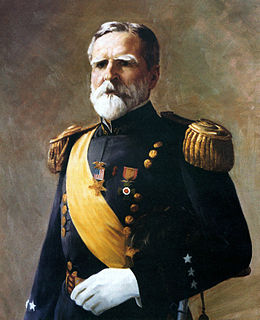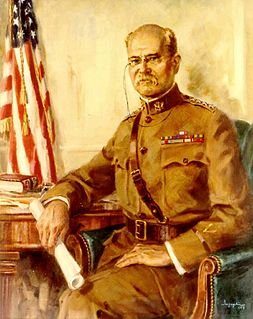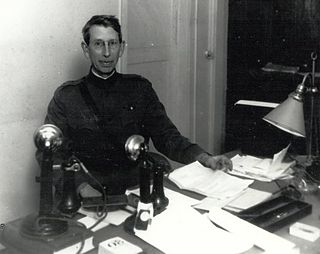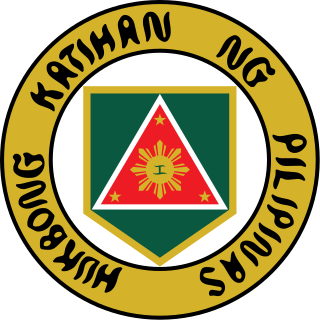Related Research Articles

The Spanish–American War was an armed conflict between Spain and the United States. Hostilities began in the aftermath of the internal explosion of USS Maine in Havana Harbor in Cuba, leading to U.S. intervention in the Cuban War of Independence. The war led to the U.S. emerging predominant in the Caribbean region, and resulted in U.S. acquisition of Spain's Pacific possessions. It led to U.S. involvement in the Philippine Revolution and later to the Philippine–American War.

The Philippine–American War or the Filipino–American War, previously referred to as the Philippine Insurrection or the Tagalog Insurgency by the United States, was an armed conflict between the First Philippine Republic and the United States that lasted from February 4, 1899, to July 2, 1902. While Filipino nationalists viewed the conflict as a continuation of the struggle for independence that began in 1896 with the Philippine Revolution against Spain, the U.S. government regarded it as an insurrection. The conflict arose when the First Philippine Republic objected to the terms of the Treaty of Paris under which the United States took possession of the Philippines from Spain, ending the Spanish–American War.

Thomas Jordan was a Confederate general and major operative in the network of Confederate spies during the American Civil War. A career soldier in the armies of three nations, he had previously fought in the Mexican–American War, and in 1868 was appointed as chief of staff of the Cuban insurgent army, which fought to achieve independence from Spain. He resigned in 1870 and returned to the United States, where he settled in New York City. Jordan was also a newspaper editor and author, writing articles about the American Civil War.

A military attaché is a military expert who is attached to a diplomatic mission, often an embassy. This type of attaché post is normally filled by a high-ranking military officer, who retains a commission while serving with an embassy. Opportunities sometimes arise for service in the field with military forces of another sovereign state.

The Battle of Manila, sometimes called the Mock Battle of Manila, was a land engagement which took place in Manila on August 13, 1898, at the end of the Spanish–American War, four months after the decisive victory by Commodore Dewey's Asiatic Squadron at the Battle of Manila Bay. The belligerents were Spanish forces led by Governor-General of the Philippines Fermín Jáudenes, and American forces led by United States Army Major General Wesley Merritt and United States Navy Commodore George Dewey. American forces were supported by units of the Philippine Revolutionary Army, led by Emilio Aguinaldo.

John Coalter Bates was a United States Army officer who served as Chief of Staff of the United States Army from January to April 1906. Along with Arthur MacArthur Jr., Bates was one of the last American Civil War veterans still on active duty in the United States military at the time of his retirement.

Tasker Howard Bliss was a United States Army officer who served as Chief of Staff of the United States Army from September 22, 1917 until May 18, 1918. He was also a diplomat involved in the peace negotiations of World War I, and was one of the co-signatories of the Treaty of Versailles for the United States.

Ralph Henry Van Deman (1865–1952) was a United States Army officer, sometimes called "The Father of American Military Intelligence." General Van Deman is in the Military Intelligence Hall of Fame.

James Arthur Williams was a United States Army lieutenant general. Williams served as Director of the Defense Intelligence Agency in the 1980s. He was a 1987 inductee of the Military Intelligence Hall of Fame and was the chairman of the board of directors for the National Military Intelligence Association.
The Defence Strategic Policy and Intelligence Group (SP&I) of the Australian Government Department of Defence is responsible for defence diplomacy, strategic policy, international security, and military intelligence co-ordination and advice to the Prime Minister of Australia, Minister for Defence, Secretary of the Department of Defence, and Chief of the Defence Force. The Defence Strategic Policy and Intelligence Group is led by the Deputy Secretary for Strategic Policy and Intelligence and comprises three policy divisions and two intelligence agencies.
The Criminal Investigation Task Force (CITF) is an organization created in early 2002 by the United States Department of Defense to conduct investigations of detainees captured in the War on Terrorism. It was envisioned that certain captured individuals would be tried by a military tribunal for war crimes and/or acts of terrorism.

The history of the Philippines from 1898 to 1946 began with the outbreak of the Spanish–American War in April 1898, when the Philippines was still a colony of the Spanish East Indies, and concluded when the United States formally recognized the independence of the Republic of the Philippines on July 4, 1946.

The Philippine Army (PA) is the main, oldest and largest branch of the Armed Forces of the Philippines (AFP), responsible for ground warfare and currently has an estimated strength of over 150,000 soldiers, backed by 120,000 ready reserves.The service branch was established on December 21, 1935 as the Philippine Commonwealth Army. The Philippine Army has engaged in many conflicts including the ongoing Communist rebellion in the Philippines and the Moro conflict, and other conflicts worldwide.

Major General Henry Tureman Allen was a senior United States Army officer known for exploring the Copper River in Alaska in 1885 along with the Tanana and Koyukuk rivers by transversing 1,500 miles (2,400 km) of wilderness. His trek has been compared by Nelson A. Miles to that of Lewis and Clark.
United States Department of Defense, and associated, civil affairs are civil-military operations (CMO) use of military force to control areas seized from the enemy, minimize insurgency or civil interference with military operations, and maximize civil support for military operations. CMO is conducted in conjunction with combat operations during wartime and becomes a central part of a military campaign in counter-insurgencies. CMO operations have been in frequent use since 1775 by the United States Army, as well as more recently by the Navy and Marine Corps.

Stanley Hamer Ford was a United States Army General. He was commander of the Philippine Department, 1st Infantry Division, Seventh Corps Area, Sixth Corps Area, and the Second United States Army.

The Military Intelligence Division was the military intelligence branch of the United States Army and United States Department of War from May 1917 to March 1942. It was preceded by the Military Information Division and the General Staff Second Division and in 1942 was reorganised as the Military Intelligence Service.

Henry Howard Whitney was a United States military officer who attained the rank of brigadier general. He was known primarily for the spy missions he carried out in Puerto Rico and Cuba prior to the start of the Spanish–American War.

The United States Military Government of the Philippine Islands was a military government in the Philippines established by the United States on August 14, 1898, a day after the capture of Manila, with General Wesley Merritt acting as military governor. During military rule (1898–1902), the U.S. military commander governed the Philippines under the authority of the U.S. president as Commander-in-Chief of the United States Armed Forces. After the appointment of a civil Governor-General, the procedure developed that as parts of the country were pacified and placed firmly under American control, responsibility for the area would be passed to the civilian.
The Military Intelligence and Reconnaissance Administration, is the agency of the Egyptian Ministry of Defence responsible for military intelligence. It is one of the three Egyptian intelligence services, along with the General Intelligence Directorate and Homeland Security.
